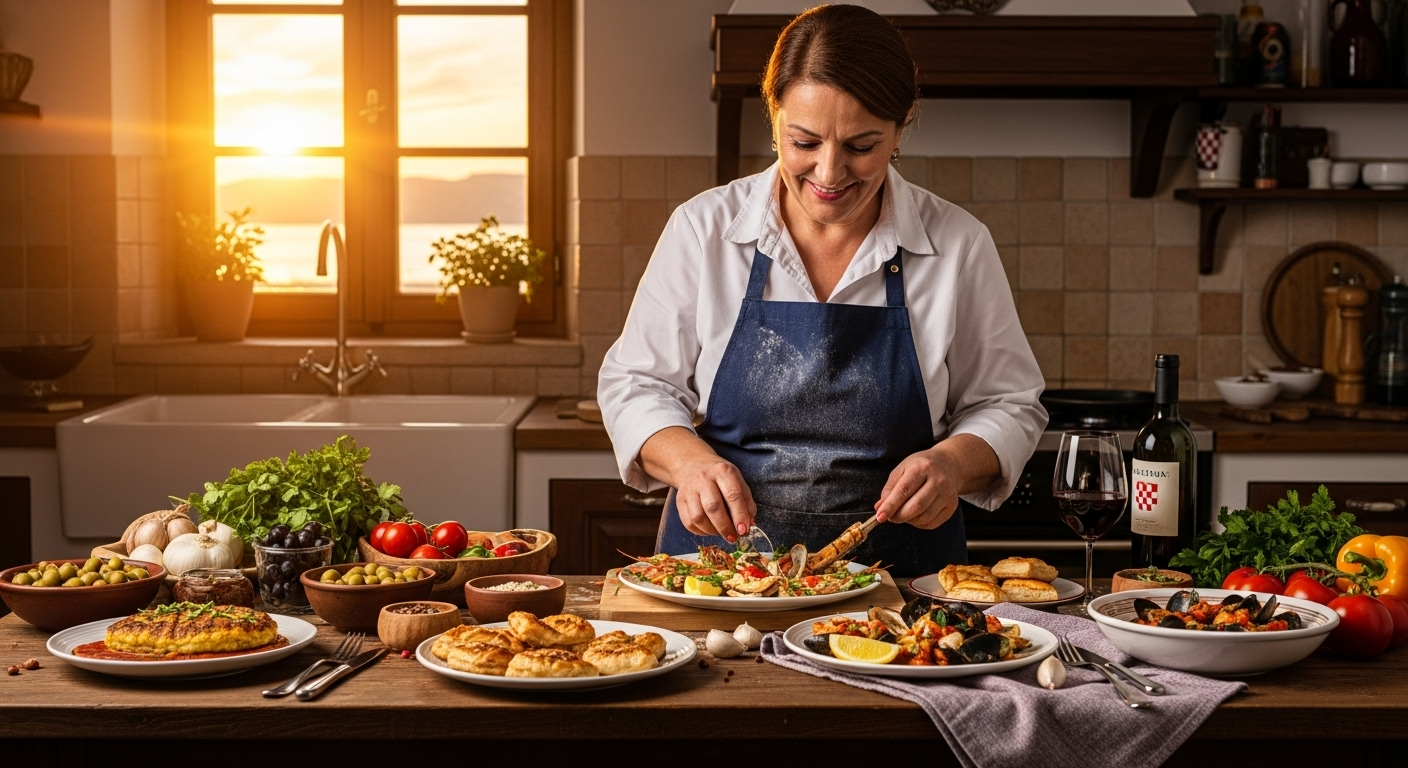Culinary Alchemy: Transforming Everyday Ingredients
Unlock the hidden potential of your pantry staples and elevate ordinary meals to extraordinary culinary experiences. This guide explores innovative techniques and unexpected flavor combinations that will revolutionize your approach to cooking, turning simple ingredients into gourmet masterpieces.

Humble Heroes: Elevating Pantry Staples
Your pantry is a treasure trove of culinary possibilities waiting to be unleashed. This section focuses on transforming often-overlooked ingredients into show-stopping dishes. Learn how to turn canned beans into a velvety, restaurant-quality soup, or discover the secret to making crispy, addictive chickpea snacks that rival any store-bought chip. We’ll explore techniques for caramelizing onions to sweet perfection, adding depth to countless dishes, and show you how to infuse oils with herbs and spices for instant flavor boosts. By the end of this section, you’ll see your pantry with new eyes, ready to create gourmet meals from the most basic ingredients.
The Art of Flavor Pairing
Unexpected flavor combinations can turn a good dish into an unforgettable one. This section dives into the principles of flavor pairing, teaching you how to create harmonious and exciting taste experiences. We’ll explore classic pairings like tomato and basil, and then venture into more adventurous territory with combinations like strawberry and black pepper or chocolate and olive oil. Learn how to balance sweet, salty, sour, bitter, and umami flavors to create complex, layered dishes. We’ll also discuss how to use contrasting textures to add interest to your meals, like pairing creamy avocado with crunchy toasted seeds. Armed with this knowledge, you’ll be able to create unique flavor profiles that will surprise and delight your taste buds.
Techniques for Texture Transformation
Texture plays a crucial role in our enjoyment of food, often elevating simple ingredients to new heights. This section explores various techniques for altering the texture of foods, from crispy to creamy and everything in between. Learn the art of tempura battering to create light, crispy vegetables, or master the technique of spherification to turn liquids into caviar-like pearls. We’ll delve into the world of molecular gastronomy, showing you how to create foams, gels, and even edible soil to add visual and textural interest to your plates. Discover how to use a simple cream whipper to infuse flavors into liquids and create airy mousses. By mastering these techniques, you’ll be able to play with textures in ways that will transform your cooking and impress your guests.
Waste Not, Want Not: Reimagining Leftovers
In the spirit of sustainability and creativity, this final section focuses on transforming leftovers and typically discarded food parts into delicious new dishes. Learn how to turn stale bread into a rich, savory bread pudding or crispy croutons for salads. Discover innovative ways to use vegetable scraps, like turning carrot tops into a vibrant pesto or roasting potato peels into crispy chips. We’ll explore techniques for reinventing leftover meats and vegetables, turning yesterday’s roast chicken into today’s exciting Asian-inspired lettuce wraps. By adopting this mindset, you’ll reduce food waste while expanding your culinary repertoire, proving that with a little creativity, nothing in your kitchen need go to waste.
Culinary Transformation Tips
-
Invest in a good quality mortar and pestle for grinding spices and making pastes
-
Experiment with different cooking methods for the same ingredient to discover new textures and flavors
-
Use acid (like lemon juice or vinegar) to brighten flavors and balance rich dishes
-
Master the art of seasoning throughout the cooking process, not just at the end
-
Learn to make your own spice blends for unique flavor profiles
-
Embrace fermentation to transform simple ingredients into complex, tangy delights
-
Use umami-rich ingredients like miso or fish sauce to add depth to vegetarian dishes
-
Try cold-smoking ingredients at home for a touch of smoky flavor without heat
In conclusion, culinary alchemy is about more than just cooking; it’s about transforming the ordinary into the extraordinary. By understanding the science of flavor, mastering new techniques, and approaching ingredients with creativity and curiosity, you can elevate your cooking to new heights. Remember, the most exciting culinary discoveries often come from experimentation and a willingness to think outside the recipe box. So, embrace your inner alchemist, and let your kitchen become a laboratory of delicious possibilities.




